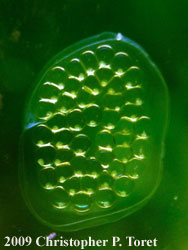CC FAQ Pages
Other Resources
Scientific & Reproductive FAQ
Are newts or salamanders poisonous?
Many species are. When handling them, wash hands before and after. Do some more research on your animal to find out the extent of how poisonous it is. For information about toxicity research in newts, see the articles Newt Toxins and Toxicity of Newts.
How long can newts/salamanders live?
They can live a LONG time if cared for correctly. We've heard stories about a Japanese fire belly newt (Cynops pyrrhogaster) over 27 years old, and a Cynops ensicauda in Europe that is reported to be over 50 years old. These animals are still reproductively active. Make sure your family knows what to do in case you die before your pets do. For more information, see Caudate Longevity.
How do I tell how old my newt/salamander is?
Unless it is captive bred, you have no way of knowing. With rare exceptions, all pet shop newts and salamanders are wild caught, so who knows how old they were when they were collected. A good estimate is that if your newt is sexually mature, it is at least five years old. Some species are slow growing so they may be as old as 7 to 10 years. You can never be certain.
What species do I have?
If it's a firebelly newt, see the article entitled What kind of Fire Belly is it?. If not, check to see if there is a picture of something similar in the Species Database. If you found it in the wild, check a field guide. If you found it in the United States, try the USGS Amphibian Species Identification Guide.
What is the difference between a newt and a salamander?
There is no meaningful difference. The distinction is more historic and linguistic than scientific. Newts are a subgroup of salamanders. All newts are salamanders, but not all salamanders are newts. The following are the things that distinguish newts from salamanders.
- A salamander is called a "newt" if it belongs to one of the following genera: Cynops, Echinotriton, Euproctus, Neurergus, Notophthalmus, Pachytriton, Paramesotriton, Pleurodeles, Taricha, Triturus, or Tylototriton. This is the only distinction that is always true.
- Newts generally spend more of their adult lives in the water than salamanders. However, there are exceptions (terrestrial newts and aquatic salamanders).
- Newts generally have more distinctive differences between the sexes and a more complex aquatic courtship. Again, there are exceptions.
How do I tell if my animal is male or female?
See Sexing Caudates.

Eggs of a common aquarium snail. These are not newt eggs.
How do you breed _____________?
Every species has different preferences and requirements. No matter what, most species will require more than just throwing a male and female into the same enclosure. The only way you can find out how to breed any caudate is to learn more about its natural habitat and behavior and read information from others who have done it successfully. The best places to find other people with expertise in breeding caudates is the Caudata.org Forum and the United States Caudate Registry.
How do you raise baby newts and salamanders from eggs?
Why are my larvae dieing?
See Why Larvae Die.
I found some eggs in my tank - are they newt eggs?
The photo at right shows snail eggs. These are often mistaken for newt eggs. To view photos of actual newt eggs, see the article Raising Newts from Eggs.

